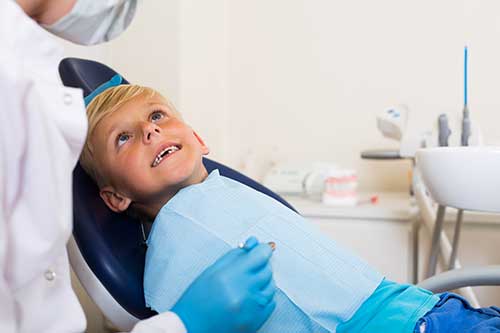7 Easy Facts About Legacy Orthodontics Explained
7 Easy Facts About Legacy Orthodontics Explained
Blog Article
The Legacy Orthodontics Ideas
Table of Contents5 Simple Techniques For Legacy OrthodonticsThe Definitive Guide for Legacy OrthodonticsAn Unbiased View of Legacy OrthodonticsThe 8-Second Trick For Legacy OrthodonticsGet This Report about Legacy Orthodontics
In addition, we provide flexible therapy routines, versatile payment choices and an enjoyable, satisfying experience.An orthodontist is a dentist trained to detect, protect against, and treat teeth and jaw irregularities. Orthodontists function with people of all ages, from children to adults.
Malocclusion, or misaligned teeth, can cause oral problems, including dental cavity, periodontal condition, and hard or unpleasant eating. Not every person is born with straight teeth. If you have a negative bite or big spaces in between your teeth, you may desire to speak with a dentist concentrating on orthodontic treatment.
Excitement About Legacy Orthodontics
( Image Credit Score: DigitalVision/Getty Images) Orthodontists make use of taken care of and removable dental devices, like dental braces, retainers, and bands, to alter the setting of teeth in your mouth. Orthodontic treatment is for dental irregularities, consisting of: Jagged teethBite troubles, like an overbite or an underbiteCrowded teeth or teeth that are also far apartJaw misalignmentThe objective of orthodontic therapy is to improve your bite.
While you might assume of orthodontists as generally for kids or teenagers who require braces, they can correct dental problems at any type of age. Orthodontists attend university, dental institution, and orthodontic institution.
All orthodontists are dental professionals, yet not all dental practitioners are orthodontists. Orthodontic residency programs provide intensive, focused instruction for oral specialists. They concentrate on 2 locations: Just how to correctly and securely relocate teeth Just how to correctly guide development in the teeth, jaw, and faceOnce an orthodontist has completed training, they have the alternative to become board certified.
The Greatest Guide To Legacy Orthodontics
Malocclusion leads to tooth overcrowding, a twisted jaw, or irregular bite patterns. Malocclusion is normally treated with: Your orthodontist affixes steel, ceramic, or plastic square bonds to your teeth.
Some people require a headgear to assist relocate teeth right into line with pressure from outside the mouth. A retainer is a personalized tool that maintains your teeth in location.
They're most typically used on youngsters. They can produce additional room in the mouth without needing to draw teeth. If you have a significant underbite or overbite, you could need orthognathic surgical procedure (likewise called orthodontic surgical treatment) to extend or reduce your jaw. Orthodontists make use of cables, medical screws, or plates to sustain your jaw bone.
You might need to see an orthodontist if you have: Crowding or otherwise sufficient space for all of your teethOverbite, when your top teeth come by your bottom teethUnderbite, when your bottom teeth are also far forwardSpacing or issues with gapsCrossbite, which is when your upper teeth fit behind your bottom teeth when your mouth is closedOpen bite or a vertical space between your front base and top teethMisplaced midline, when the facility of your base and top teeth don't line up Fixing a dental malocclusion can: Make biting, eating, and speaking easierImprove the proportion of our face and your overall appearanceEase pain from leesburg clear braces temporomandibular joint conditionsSeparate your teeth and make them easier to cleanse, helping prevent dental cavity or cavities It's frequently a dental expert that first notifications misaligned teeth throughout a routine test.
Legacy Orthodontics Fundamentals Explained

During your very first orthodontic assessment, you'll likely have: A dental examPhotos taken of your face and smileDental X-raysPanoramic (360 level) X-rays of your face and headImpressions to develop mold and mildews of your teethThese tests will help your orthodontist know exactly how to wage your therapy. orthodontics. An orthodontist is a dentist who's had training to treat your teeth and jaw
An orthodontist is concentrated on your bite, so something like a cracked tooth would certainly be handled by a dental expert. Orthodontists are focused on your bite, or the way your teeth fit with each other, and the straightness of your teeth.
Ever questioned exactly how celebs always seem to have perfectly aligned teeth? The answer often lies in the experienced hands of an orthodontist. What specifically does an orthodontist do? Orthodontists are dental professionals that concentrate on remedying irregularities in the teeth and jaws. Their knowledge goes past simply developing a lovely smile; it expands to improving your general dental health and feature.
The 30-Second Trick For Legacy Orthodontics

While dental braces are the most frequently recognized orthodontic treatment, orthodontists have a diverse toolkit at their disposal. The certain technique chosen depends on the extent of the situation, the client's age, and private choices. These tried-and-true braces use a system of brackets bonded to the teeth and linked by wires.
Clear aligners, like Invisalign, are a prominent alternative for clients looking for an extra discreet therapy option. These removable trays are personalized to gradually shift the teeth's position. Headwear might be utilized in conjunction with dental braces or aligners to apply added targeted pressures, particularly for dealing with jaw disparities. In cases of slim jaws, palatal expanders can be made use of to create area for correct tooth positioning.
Report this page